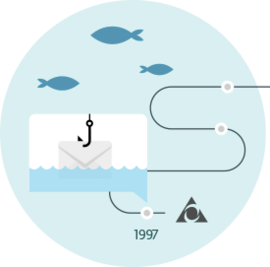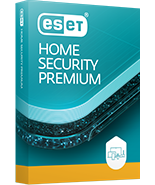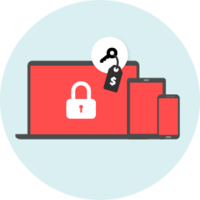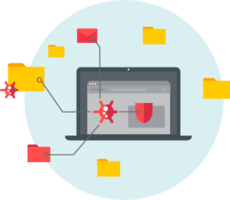What is phishing?
Have you ever received an email or electronic communication – seemingly coming from a bank or other trustworthy source – that requested you “confirm” your account credentials or other sensitive information?
If so, you already know one of the most common definitions of phishing.
Origin of the term
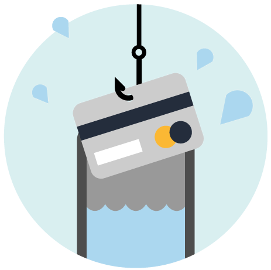
Types of phishing scams
Phishing has been around for years and in that time, attackers have developed a wide array of methods to target victims.
The most common phishing technique is to impersonate a bank or financial institution via email, to lure the victim either into completing a fake form in - or attached to - the email message, or to visit a webpage requesting entry of account details or login credentials.
Similar attacks can also be performed via phone calls (vishing) as well as SMS messages (smishing).
In the past, misspelt or misleading domain names were often used for this purpose. Today, attackers incorporate more sophisticated methods, making the links and fake pages closely resemble their legitimate counterparts.
Information stolen from the victims is usually misused to empty their bank accounts or is sold online.
Spearfishing
Smishing
Deceptive phishing
Whaling
Pharming
How to recognise phishing
An email or electronic message can contain official logos or other signs of a reputable organisation and still come from phishers. Below are a few hints that can help you spot a phishing message.
Read more
How To Prevent Phishing
To avoid a phishing bait, be aware of the above indicators by which phishing messages commonly give themselves away.
Follow these simple steps
You can learn more about phishing here.
Notable examples
Systematic phishing started in the America Online (AOL) network in 1995. To steal legitimate account credentials, attackers contacted victims via AOL Instant Messenger (AIM), often pretending to be AOL employees verifying user passwords. The term “phishing” popped up on a Usenet newsgroup that focused on a tool called AOHell that automated this method, and the name stuck. After AOL introduced countermeasures in 1997, the attackers realised they could use the same technique in other parts of the online realm – and moved towards impersonating financial institutions.
Read more
ESET offers you an award-winning antivirus
ESET HOME Security Premium
Powerful, multilayered protection to encrypt sensitive data, manage passwords easily, secure online transactions and more. A user-friendly solution for enhanced privacy online. Secures Windows, macOS, Android, and iOS devices.
